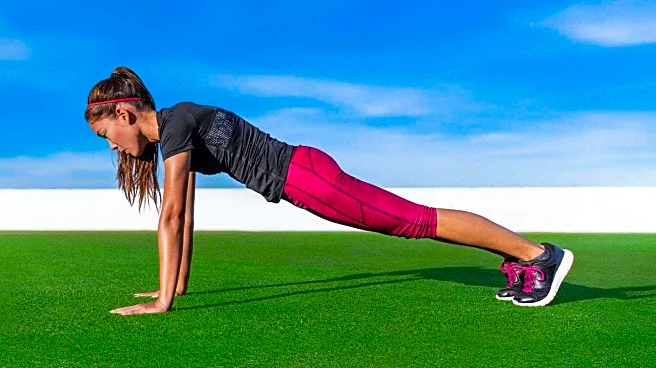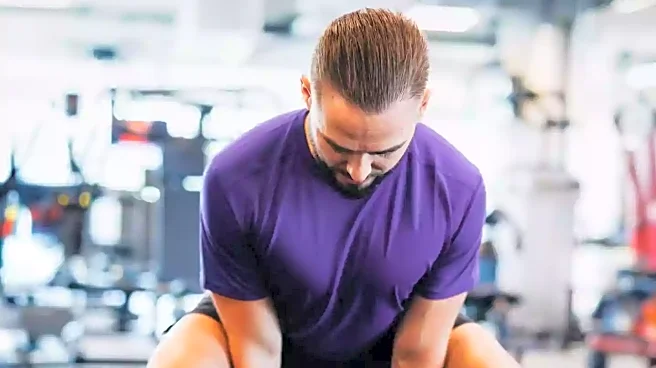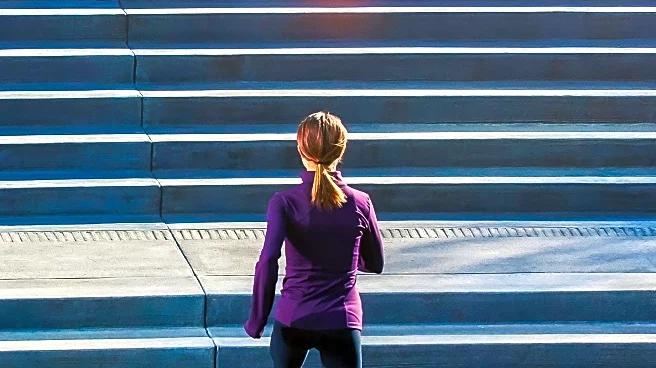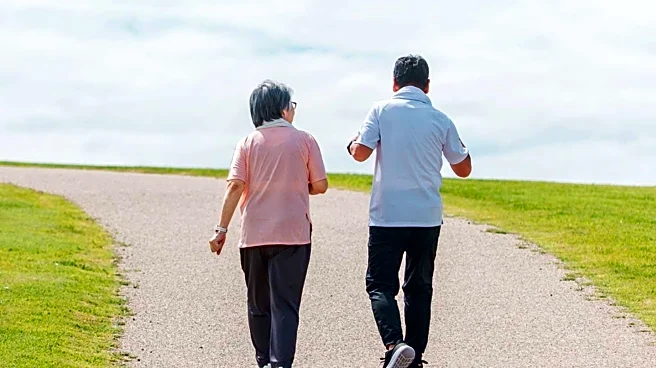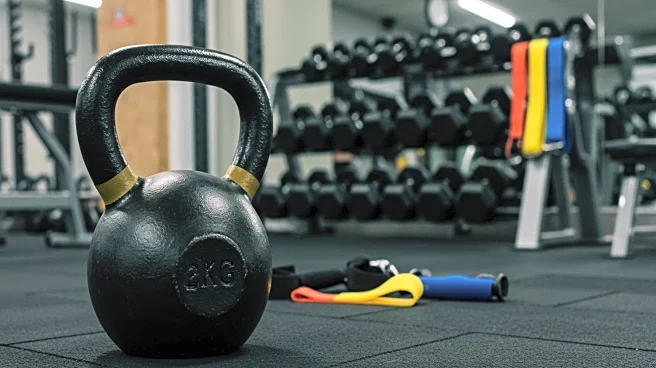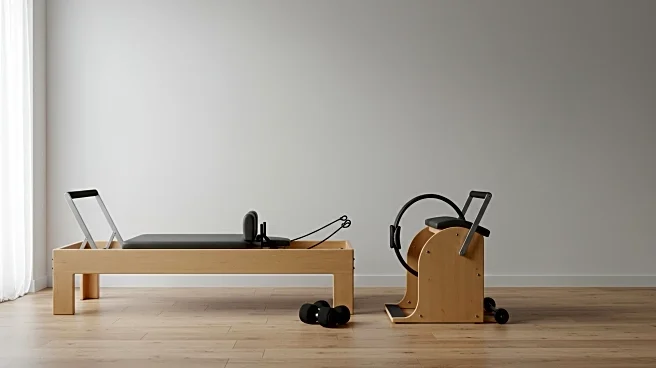What is the story about?
What's Happening?
As individuals age, muscle loss, known as sarcopenia, becomes a significant health concern, affecting mobility, strength, and independence. This condition can begin as early as the 30s and accelerates with age, potentially leading to a loss of 3 to 8 percent of muscle mass per decade without regular resistance training. To address this issue, fitness and nutrition advisor Chris Mohr, PhD, RD, has identified five daily exercises that can help reverse muscle loss for those over 45. These exercises include step-ups, wall sits, incline pushups, chair-assisted lunges, and standing banded rows. Each exercise targets different muscle groups and aims to improve strength, balance, and daily function, thereby reducing the risk of falls and fractures.
Why It's Important?
The significance of combating muscle loss extends beyond physical appearance; it impacts overall health, metabolism, and the ability to perform everyday tasks. As muscle mass decreases, individuals may experience a decline in balance and joint health, increasing the risk of falls and related injuries. By incorporating resistance and functional training into daily routines, older adults can maintain or even increase muscle mass, thereby enhancing their quality of life. This approach not only supports physical health but also contributes to mental well-being by promoting independence and reducing the likelihood of injury-related complications.
What's Next?
For those looking to implement these exercises, it is recommended to start with manageable sets and gradually increase intensity as strength and confidence build. Fitness professionals may also consider developing tailored exercise programs for older adults, focusing on safety and effectiveness. Additionally, further research into age-specific fitness regimens could provide more insights into optimizing health outcomes for the aging population.
Beyond the Headlines
The cultural shift towards prioritizing health and fitness in older age groups reflects a broader societal recognition of the importance of maintaining an active lifestyle. This trend may influence public health policies and encourage the development of community programs aimed at supporting older adults in staying active. Moreover, the fitness industry could see an increase in demand for age-appropriate exercise equipment and classes, highlighting the economic potential of catering to this demographic.
AI Generated Content
Do you find this article useful?
